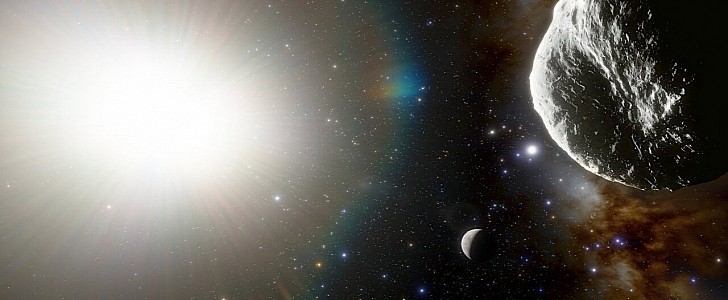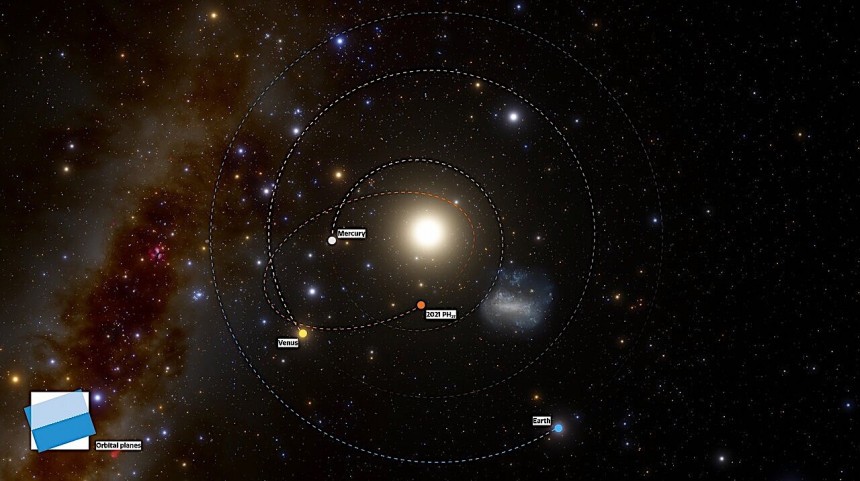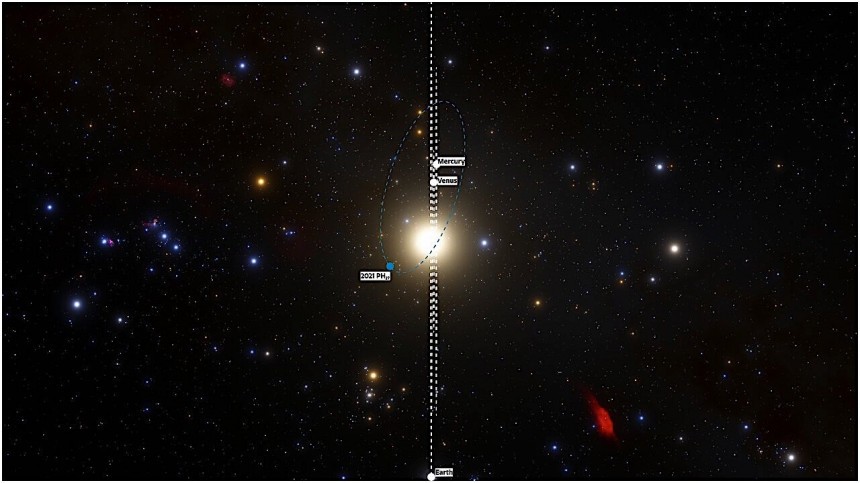It may not seem like it, but the biggest existential threat to us humans has nothing to do with our planet or our activities here, but was born somewhere in the solar system. As per NASA estimates, there are now 25,705 near-Earth asteroids circling our planet at various distances, and if one of them were to head our way, not even a six-month warning would not be enough for us to do something about it.
This is why word of the fastest orbiting asteroid in our solar system being discovered might be worrying for some. As with all other asteroids out there, it will eventually end up hitting something, and get blown to smithereens sometime in the future. Luckily, that something will probably not be Earth. But I’m getting ahead of myself.
So, back in August word reached us of the fastest asteroid in our solar system being discovered. We’re talking about a piece of rock roughly 1 km (0.62 miles) in diameter that has the “shortest orbital period of any known asteroid in the Solar System,” going round and round the Sun every 113 days. That’s about three times a year, by our timescale.
The rock was discovered a couple of months ago by Scott S. Sheppard of the Carnegie Institution of Science using data gathered by Ian Dell’antonio and Shenming Fu of Brown University. For the task at hand, they used the Víctor M. Blanco Telescope at Cerro Tololo Inter-American Observatory (CTIO) in Chile. That would be a 4-meter aperture piece of hardware that also includes the 570-megapixel Dark Energy Camera (DECam). By any standards, that’s one powerful camera, and during the twilight periods of the last days of summer, it proved essential in locating and tracking the asteroid.
Named 2021 PH27, the rock has two possible origins. It either comes, like most other things of this kind, from the Asteroid Belt that spins between Mars and Jupiter, or it was initially a comet from the outer edges of the solar system that somehow got trapped “into a closer short-period orbit when passing near one of the terrestrial planets.” For now, scientists like the latter theory the best, given the orbital inclination (32 degrees) of the rock.
PH27 was found to take an orbit that at its closest approach to the Sun brings it to just 20 million km (12 million miles) from the surface of the flaming furnace, while the widest axis of elliptical orbit is of 70 million km (43 million miles). In its travels, it crosses the orbits of our neighbors closer to the Sun, Mercury and Venus.
Now, getting repeatedly so close to the extremely hot surface of the Sun might end up completely destroying the asteroid – scientists have calculated the surface temperature of PH27 at its closest approach as being at least 500 degrees Celsius (around 900 degrees Fahrenheit), hot enough to melt lead.
If that doesn’t happen, millions of years from now it has a very big chance of slamming into Mercury, Venus or the Sun.
You might wonder how spotting an asteroid close to the Sun, that has no chance of hitting us, helps humanity in the long run. Well, remember how we started all this with NASA’s estimate of the number of near-Earth asteroids we know about? Then consider the fact the same NASA says there are an extra 15,000 more asteroids we know nothing about.
Spotting PH27 was a particularly tricky business (more details on that here), especially because of the glare of the Sun and the size of the asteroid. But the lessons learned with it might help improve our ways, and in the process give one of the races on this planet, for the first time in history, the means to avoid extinction.
“Understanding the population of asteroids interior to Earth’s orbit is important to complete the census of asteroids near Earth, including some of the most likely Earth impactors that may approach Earth during daylight and that cannot easily be discovered in most surveys that are observing at night, away from the Sun,” concluded after the discovery the Sheppard.
So, back in August word reached us of the fastest asteroid in our solar system being discovered. We’re talking about a piece of rock roughly 1 km (0.62 miles) in diameter that has the “shortest orbital period of any known asteroid in the Solar System,” going round and round the Sun every 113 days. That’s about three times a year, by our timescale.
The rock was discovered a couple of months ago by Scott S. Sheppard of the Carnegie Institution of Science using data gathered by Ian Dell’antonio and Shenming Fu of Brown University. For the task at hand, they used the Víctor M. Blanco Telescope at Cerro Tololo Inter-American Observatory (CTIO) in Chile. That would be a 4-meter aperture piece of hardware that also includes the 570-megapixel Dark Energy Camera (DECam). By any standards, that’s one powerful camera, and during the twilight periods of the last days of summer, it proved essential in locating and tracking the asteroid.
Named 2021 PH27, the rock has two possible origins. It either comes, like most other things of this kind, from the Asteroid Belt that spins between Mars and Jupiter, or it was initially a comet from the outer edges of the solar system that somehow got trapped “into a closer short-period orbit when passing near one of the terrestrial planets.” For now, scientists like the latter theory the best, given the orbital inclination (32 degrees) of the rock.
Now, getting repeatedly so close to the extremely hot surface of the Sun might end up completely destroying the asteroid – scientists have calculated the surface temperature of PH27 at its closest approach as being at least 500 degrees Celsius (around 900 degrees Fahrenheit), hot enough to melt lead.
If that doesn’t happen, millions of years from now it has a very big chance of slamming into Mercury, Venus or the Sun.
You might wonder how spotting an asteroid close to the Sun, that has no chance of hitting us, helps humanity in the long run. Well, remember how we started all this with NASA’s estimate of the number of near-Earth asteroids we know about? Then consider the fact the same NASA says there are an extra 15,000 more asteroids we know nothing about.
“Understanding the population of asteroids interior to Earth’s orbit is important to complete the census of asteroids near Earth, including some of the most likely Earth impactors that may approach Earth during daylight and that cannot easily be discovered in most surveys that are observing at night, away from the Sun,” concluded after the discovery the Sheppard.








